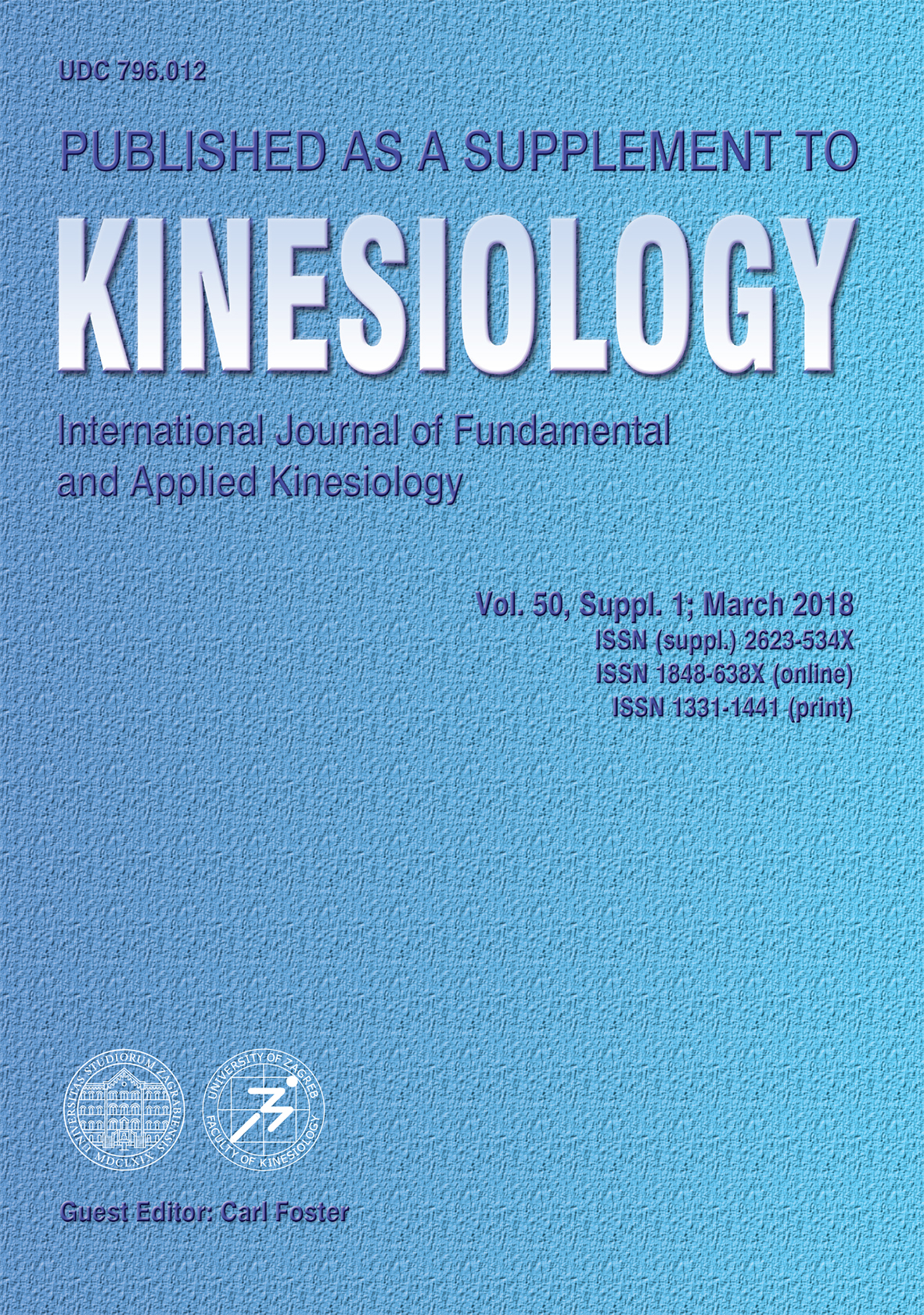RELATIONSHIP BETWEEN STRENGTH AND POWER PRODUCTION CAPACITIES IN TRAINED SPRINT TRACK CYCLISTS
Abstract
The purpose of this study was to investigate the relationship between strength and power capabilities in trained sprint track cyclists. Ten participants including six women and four men (age: 22.1±6.8 years, body height: 176.1±6.7 cm, body weight: 72.1±7.9 kg) performed isometric mid-thigh pull (IMTP) and isokinetic sprint tests. Variables measured included peak force (PF), peak rate of force development (PRFD) for the IMTP and maximal torque and maximal power (Pmax) for the isokinetic sprint test. There was a strong relationship between PF on the IMTP and maximal peak torque values across five isokinetic sprints (r=.890-.925). Strong relationships were also shown between PRFD on the IMTP and maximal torque during isokinetic sprints (r=.696-.755). No significant relationships were found between PF and Pmax produced during isokinetic sprints. The findings suggest that isometric testing can provide useful insights into force capabilities of sprint track cyclists. Strength and conditioning practitioners should improve strength and explosive force capabilities of their athletes if the desired outcome is to increase torque application and power production during maximal sprint cycling.
Key words: cycling, resistance training, force
Downloads
How to Cite
Issue
Section
License
Copyright (c) 2018 Kinesiology

This work is licensed under a Creative Commons Attribution-NonCommercial 4.0 International License.
At Faculty of Kinesiology we recognize that access to quality research is vital to the scientific community and beyond. Kinesiology is non-profit journal and all costs of publishing and peer review process are covered by the publisher itself or other funding sources like Ministry of Science and Education of the Republic of Croatia. Full text papers are also available free of charge at http://hrcak.srce.hr/kineziologija. There are no restrictions on self archiving of any form of paper (preprint, postprint and publisher's version).
Articles are distributed under the terms of the CC BY - NC 4.0
Kinesiology does not charge any fees to authors to submit or publish articles in our journal.


